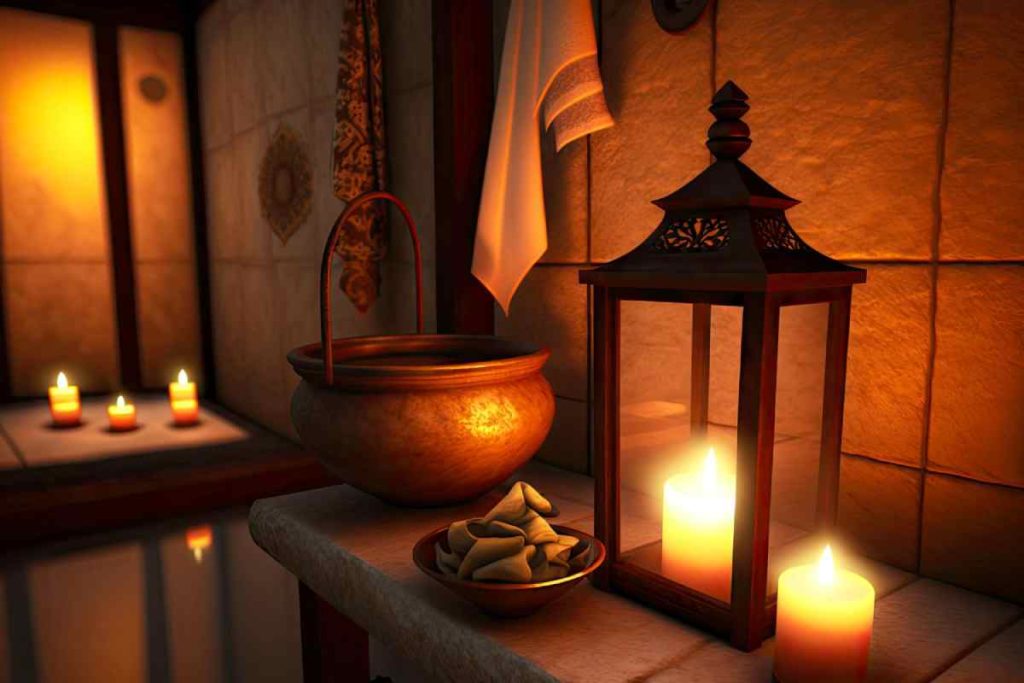The Historical Legacy of Turkish Hammams
In Istanbul, the Turkish hammam is more than a wellness ritual—it is a link to the past. The city’s bathhouses reflect a rich cultural heritage that dates back to the Roman and Ottoman eras. These spaces were originally inspired by Roman thermae and Byzantine bathing practices, then adapted by the Ottomans with Islamic purification rituals. Each visit to a Turkish bath is a step into history, where stone walls and marble basins have witnessed centuries of ritual cleansing and community bonding.
Why Istanbul Is the Heart of Hammam Culture
Istanbul’s unique geographical and cultural position between Europe and Asia has made it the ideal home for the Turkish hammam. The city boasts some of the most iconic and historically significant bathhouses in the world. From the opulent Hurrem Sultan Hammam, located near the Blue Mosque, to the neighborhood-style hammams tucked away in quiet corners, Istanbul provides a full spectrum of experiences. Whether you’re seeking a lavish spa or a humble traditional spot, this city offers the most authentic and diverse interpretations of purification and relaxation.
Architecture and Atmosphere of Istanbul Hammams
Step into any historic Turkish bath in Istanbul and you’ll find yourself surrounded by elegant domed ceilings, warm marble slabs, and beautifully tiled interiors. These architectural elements are not only aesthetic—they serve functional purposes such as condensation control and heat circulation. The design fosters spiritual renewal and creates a setting of physical comfort. The calming ambiance, often accented with natural lighting and running water, helps guests disconnect from the outside world.
Traditional Hammam Rituals Still Practiced Today
The essential steps of a Turkish hammam ritual include warming up in a hot room, exfoliating the skin with a kese mitt, enjoying a foam massage, and finishing with a cool rinse. These practices promote detoxification and help restore body-mind balance. Some hammams even include optional oil massages, facial treatments, and herbal teas for post-session relaxation. Many establishments still employ professional tellaks and natırs—trained bath attendants who preserve this centuries-old tradition with skill and care.
Modern Twists on a Timeless Experience
While tradition remains central, many Turkish baths in Istanbul now offer modern adaptations to meet contemporary preferences. You might find private treatment rooms, mixed-gender sessions, or services tailored for tourists. Wellness packages that include aromatherapy, body wraps, or even yoga are now available in upscale hammams. If you’re searching for a Turkish bath near me during your stay in Istanbul, you’re likely to find an option that strikes a balance between luxury and authenticity.
Choosing the Right Hammam in Istanbul
Istanbul offers a wide variety of hammams to suit different tastes and budgets. Popular options include the historical Çemberlitaş Hammam, built by Mimar Sinan, or the Cağaloğlu Hammam, which has served guests since the 18th century. When selecting a hammam, consider factors like cleanliness, staff professionalism, architectural ambiance, and customer reviews. Booking in advance is advisable, especially during peak tourist seasons. The right choice will provide a personalized experience and fulfill your wellness goals.
Tips for First-Time Visitors to Istanbul Hammams
If it’s your first time in a Turkish bath, don’t worry—most places are welcoming and cater to beginners. Bring a swimsuit or use the pestemal (traditional cloth) provided, stay well-hydrated, and avoid heavy meals before your visit. Let the staff know if you have any health concerns or preferences. Relax and allow yourself to surrender to the process. Your visit will leave you feeling revitalized and grounded, offering an authentic cultural immersion you won’t forget.
Conclusion
Exploring Turkish hammam culture in Istanbul is more than a spa day—it’s an invitation to step into a world of tradition, architecture, wellness, and community. With its deep-rooted history and wide variety of bathhouses, Istanbul remains the best place to experience the essence of a Turkish bath. Whether you’re a curious traveler or a resident seeking relaxation, finding a Turkish bath near me in this city offers more than just physical renewal—it’s a journey for the senses and the soul.
Frequently Asked Questions
What is a Turkish hammam?
It’s a traditional bathhouse experience involving steam, exfoliation, and massage techniques that cleanse and relax the body.
Are Turkish baths in Istanbul authentic?
Yes, many hammams in Istanbul preserve original architecture and adhere to centuries-old rituals passed down through generations.
Do I need a reservation?
It’s highly recommended, especially for historic or high-demand hammams in tourist areas.
Is the hammam experience suitable for tourists?
Absolutely, most Turkish baths in Istanbul welcome tourists and offer English-speaking staff and beginner-friendly options.
What should I bring?
A swimsuit, sandals, and any preferred personal toiletries. Most hammams provide essentials like towels and soap.
How long does a hammam session last?
Sessions typically range from 60 to 90 minutes, depending on the package or treatments selected.
Is nudity required?
No, modesty is respected. Most hammams offer pestemals or disposable underwear for coverage.
Can I find a Turkish bath near me in Istanbul easily?
Yes, there are hammams across many neighborhoods, from touristic districts to local communities.
What is the cost of a hammam visit in Istanbul?
Prices vary depending on the location and services, generally ranging from budget-friendly to luxury rates.
Will someone guide me through the process?
Yes, attendants are trained to assist guests throughout each step, especially those new to the experience.
